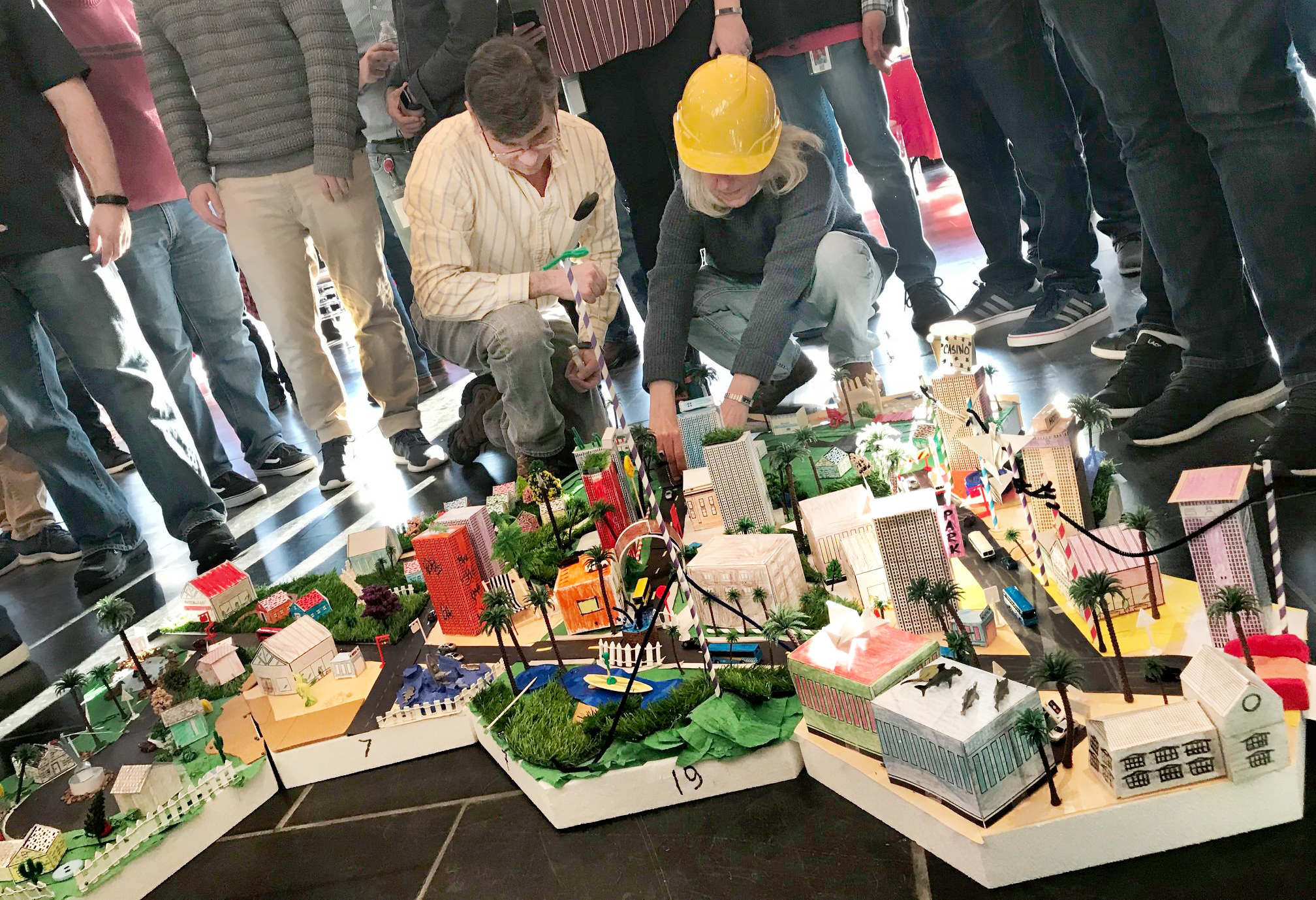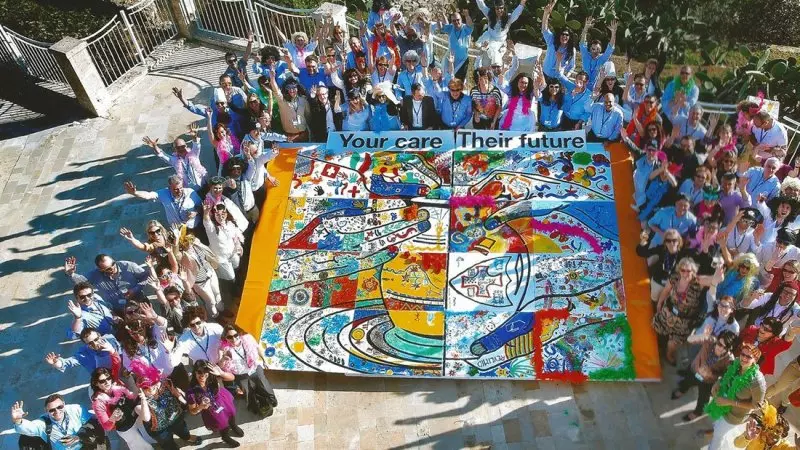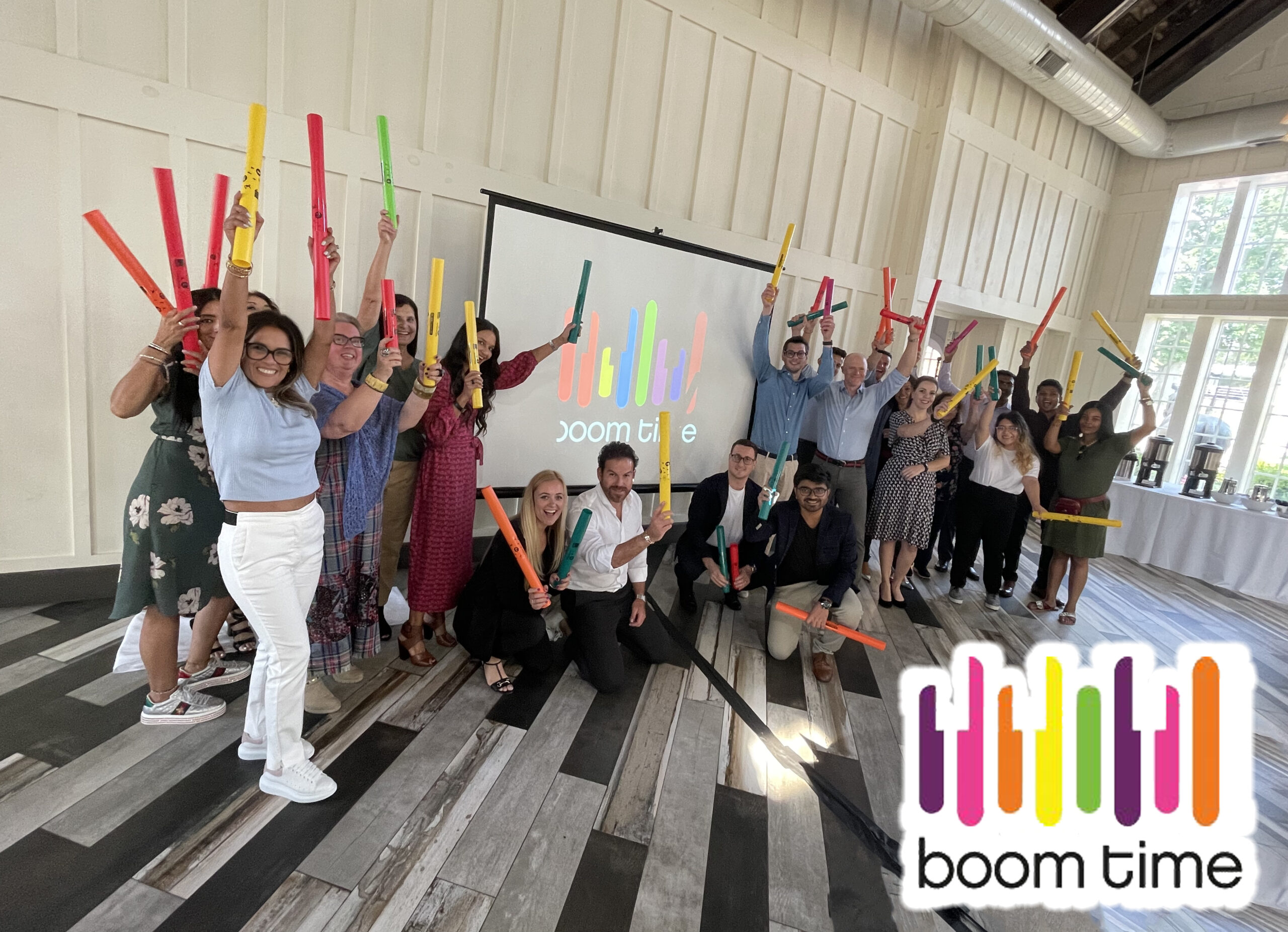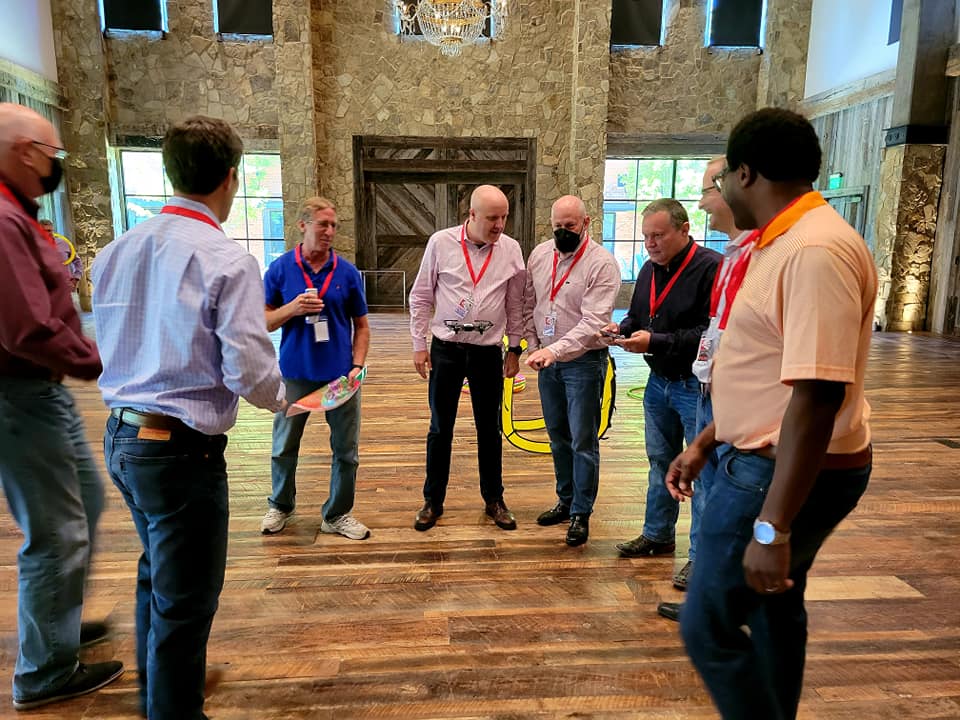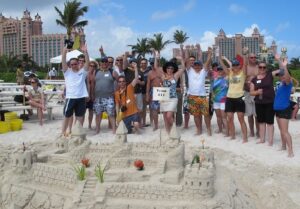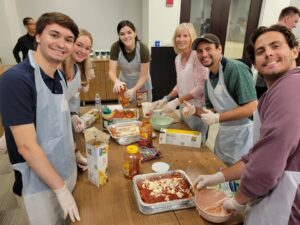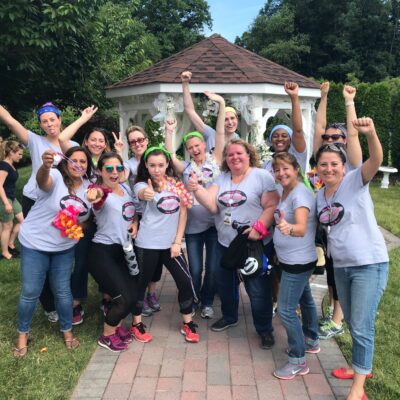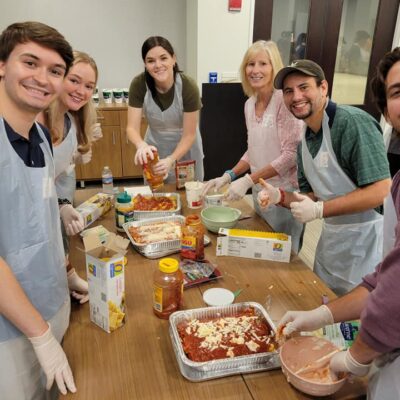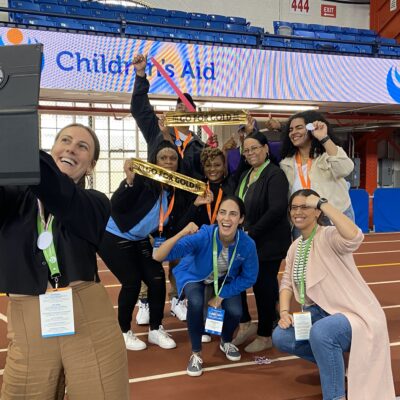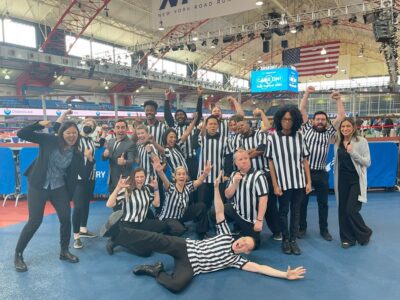Corporate retreats have become an increasingly popular option to bring remote and hybrid teams together over the past few years. Without face-to-face communication, it is easy for employees to feel isolated and unmotivated. Occasional team meetings and conferences just aren’t enough. There are many benefits of corporate retreats such as increased engagement, improved collaboration and better morale. However, companies may avoid organizing a corporate retreat due to extensive company retreat planning required and high costs.
In our podcast episode, The Power of Corporate Offsites, we met with Jared Kleinert, CEO and founder of Offsite. We discussed all the benefits of corporate retreats, corporate retreat planning, and how to know if it is right for your team. He emphasizes,
“Offsites are really a, a core pillar of how you build company culture that could lead to company benefit, but also personal benefit, sort of just building new friendships and work and combating the loneliness that comes with remote work.”
In this article, we’ll explore some of the many benefits of corporate retreats and how they can help foster a strong company culture as well as a sample team building activities you can do during your retreat. You’ll find the benefits definitely out weigh the challenges, making this a worthwhile investment for your team.
The Benefits of Corporate Retreats
1. Build Trust
In a hybrid or virtual setting, teams often find it difficult to develop strong bonds and build relationships with each other. A company retreat may be an effective way to encourage your team to bond and build trust.
To achieve this, choose activities to do during the retreat that focus on working together such as Integrity. This competitive event consists of five different challenges that will help participants improve communication and leadership skills while also highlighting individual team members’ traits.
The Infinite Loop is a virtual reality business game that is all about building a strong team capable of working together efficiently. To be successful and win the game, your employees will have to collaborate in small teams to solve puzzles and complete a secret mission.
2. Improve Communication
Meaningful and spontaneous conversations sometimes don’t occur that easily while during the workday. Constant and effective communication is a common challenge for many teams, especially those still working remotely.
Company retreats give your employees the chance to feel more relaxed and comfortable so that conversation flow more naturally. In addition to that, strengthening relationships outside of the office will increase engagement and help your team members communicate better at work.
Team Ukele encourages communication between your employees through the power of music. In this team building activity, your employees have to form a band and orchestrate their efforts to create new versions of a popular song.
You could also consider trying out In It to Win It. This is a fast-paced and competitive event that encourages strategic thinking and teamwork.
3. Enhance Strategic Planning Skills
Corporate retreats that center around problem-solving can help enhance your team’s strategic planning abilities. In City Build, teams must think outside the box to build a miniature urban landscape out of commonly available materials. Planning and communication are key to ensuring the city interconnects and runs as smoothly as possible.
4. Develop Creative Thinking
Changing the environment is an easy way to inspire creativity in your employees. Being outside of the office space often makes employees feel more comfortable, allowing them to share ideas without fear of criticism.
Brainstorming sessions and activities that encourage creative problem-solving can also help employees bounce ideas off each other and get the creative juices flowing.
The Big Picture is a powerful program that can help your teammates think creatively. Your group produces a giant mural made up of many separate canvasses. First, small teams collaborate to complete their own sections. Once finished, all sections are assembled to reveal the full masterpiece.
5. Get Acquainted
Busy schedules and the stresses of everyday work often make it difficult for coworkers to get to know one another. Another benefit of corporate retreats is it allow your employees to bond in a relaxed environment outside of the office.
Collaborative activities like Catapult to Success will help your team get acquainted in a fun way. This event encourages employees to work in teams to construct a functional catapult system.
6. Have Fun
Corporate retreats break up the routine and let your team members have fun. Having time to disconnect helps reduce stress and prevent employee burnout. Additionally, encouraging your team to take a break shows them you care and recognize their hard work.
Plan for your team to let loose and have fun together with a Team Mixology class. Your team will join an award-winning mixologist who will teach them how to create their own favorite cocktails.
High Tech Scavenger Hunts are the perfect combination of friendly competition and adventure. Designed for both indoor and outdoor settings, this activity adds a high-tech twist to a traditional scavenger hunt. With the help of an iPad, participants will need to collect photos, videos, and other entertaining items to win the game.
7. Improve Team Collaboration
Anther benefit of corporate retreats is they are a great way to redefine company goals and encourage your team to work together toward a shared purpose. This makes employees more motivated to stick around and help other members of the team be more successful.
Consider Game of Drones, an interactive experience that focuses on problem-solving, communication, and risk-taking. Employees will have to fly a drone together and overcome obstacles. To be successful at this game, your team will have to put each member’s strengths to best use.
Corporate Retreat Planning Checklist
Event Pre-Planning
Define Objectives: Establish the purpose of the retreat (whether it’s for team building, strategic planning, relaxation, etc.) and set clear goals and outcomes.
Create a Budget: Estimate costs for accommodation, transportation, activities, meals, and supplies. It’s always best to overestimate to avoid incurring unexpected expenses.
Select Dates: The goal is for everyone to bond during this retreat, so choose dates that work for most of your employees. Consider the best season for the planned activities–whether it’s camping in the summer or a ski retreat in the winter.
Choose a Location: Select a venue that meets your needs in terms of size, amenities, and location. Visit the site beforehand if possible to make sure it meets your expectations.
Retreat Logistics
Accommodation: Book rooms or cabins that have enough space for all attendees.
Transportation: Arrange transportation to and from the retreat location. This can include carpooling, charter buses, or flights if needed.
Meals and Snacks: Plan meals (breakfast, lunch, and dinner) and snacks. Make sure to make note of employees’ dietary restrictions and preferences. Arrange catering or plan for on-site cooking.
Activity Preparations
Plan Activities: Schedule a mix of work-related sessions and fun activities. Include team building exercises, recreational activities, and downtime for employees to recharge on their own. Hire facilitators or guides to lead the events if necessary.
Prepare Materials: Gather any materials needed for workshops or meetings (projectors, flip charts, pens, etc.) and prepare any handouts or presentations in advance.
Prior Communication
Invite Attendees: Send out invitations with all necessary details (dates, location, agenda, and more). Collect RSVPs and track the number of employees who plan to attend so you can accurately prepare.
Provide an Itinerary: Share a detailed schedule with all participants including times for activities, meals, and free time.
Health and Safety
Health Precautions: Bring first aid kits and ensure someone is trained in first aid in case of emergencies. Check for any health concerns or special needs of your employees and know the location of the nearest hospital.
Safety Briefings: Conduct safety briefings for any outdoor or high-risk activities to ensure all employees are aware of emergency procedures.
Final Preparations
Confirm Bookings: Reconfirm all reservations (accommodation, transportation, activities) and verify any special arrangements or requests.
Assign Roles: Designate responsibilities among team members (activity leaders, first aid responders, etc.). Ensure everyone knows their role and responsibilities.
Fun Company Retreat Ideas
Outdoor Adventure Retreat
Organize activities like hiking, zip-lining, or kayaking for your team to connect with nature and get active. Being in nature can boost morale and foster team bonding through shared challenges and experiences.
Wellness and Relaxation Retreat
Focus on health and wellbeing with activities like yoga, meditation, spa treatments, and healthy cooking classes. This can help employees unwind, recharge, and get to know each other in a relaxed environment.
Creative Workshops Retreat
Offer hands-on workshops like painting, pottery, cooking, or photography to get your team’s creative juices flowing. These activities encourage creativity and can be a fun way for team members to connect.
Cultural Immersion Retreat
Visit a place rich in history and culture. Include activities like guided tours, local cuisine tasting, and cultural performances. This retreat idea is educational and entertaining for your team, even if they aren’t history buffs.
Game and Sports Retreat
Plan a mix of competitive and cooperative games such as scavenger hunts, escape rooms, or sports tournaments. Activities like corporate Olympics can promote teamwork and friendly competition.
Reap the Benefits of Corporate Retreats with TeamBonding
Organizing a company retreat for your employees is sure to pay off in many ways. Improved team collaboration, stronger trust, and enhanced strategic skills are just some of the benefits of corporate retreats for your team. Be sure to listen to the complete podcast episode to learn more.
Contact us today to learn more about how we can make your corporate retreat happen or browse our list of team building activities to find more examples of exciting and engaging events that your team can try.
